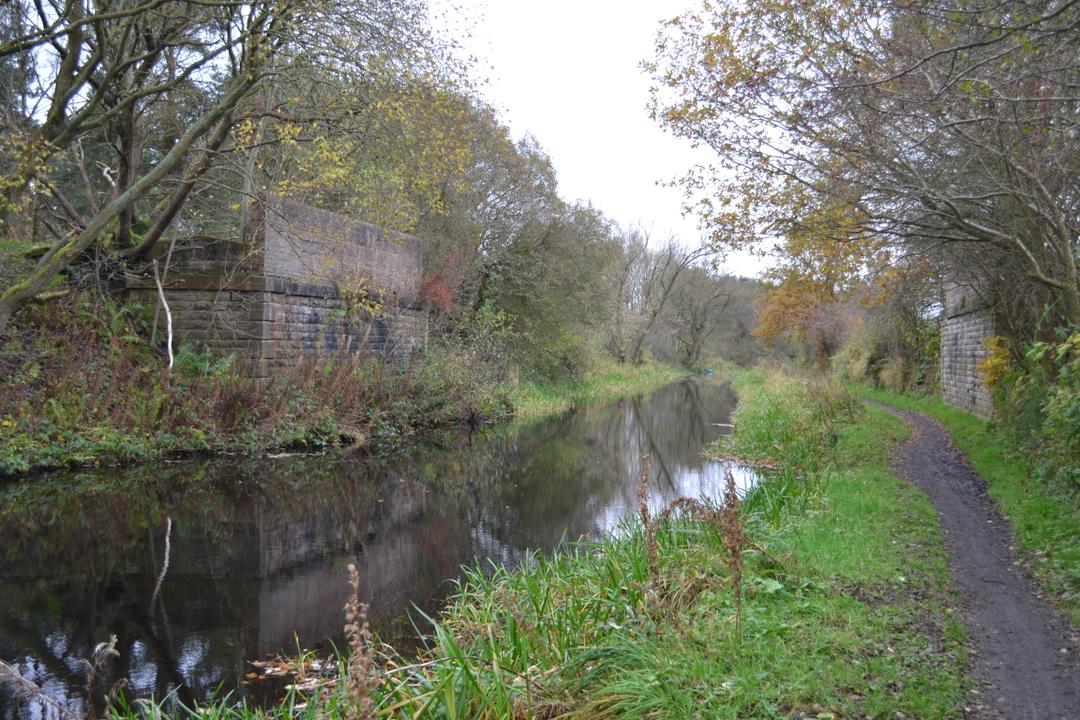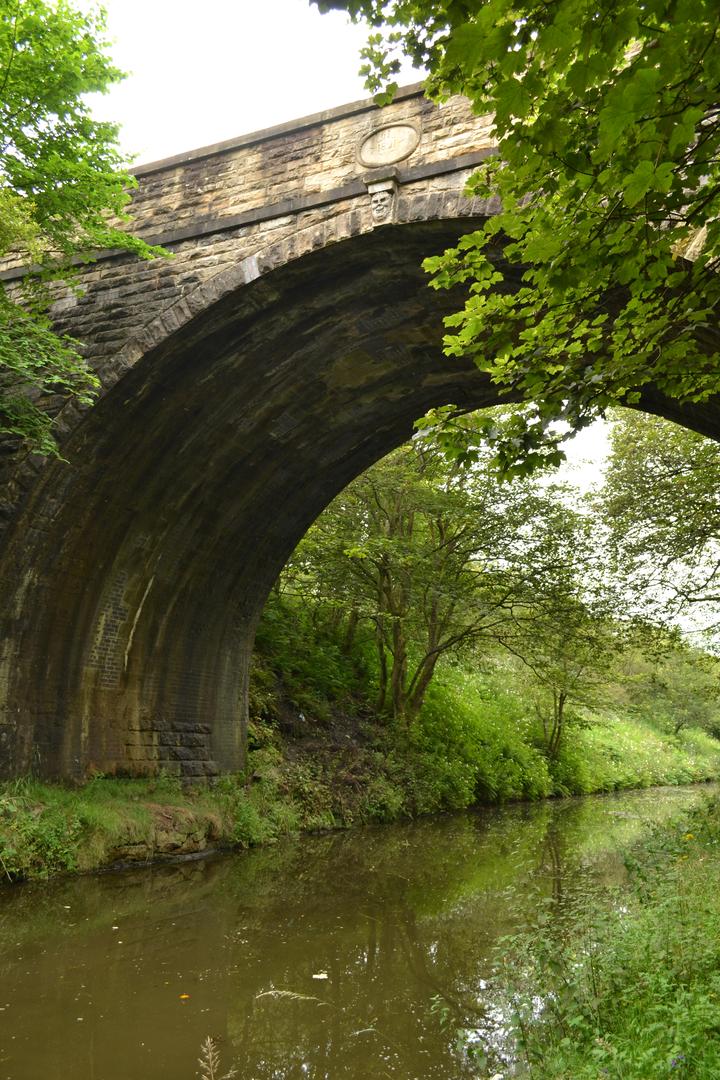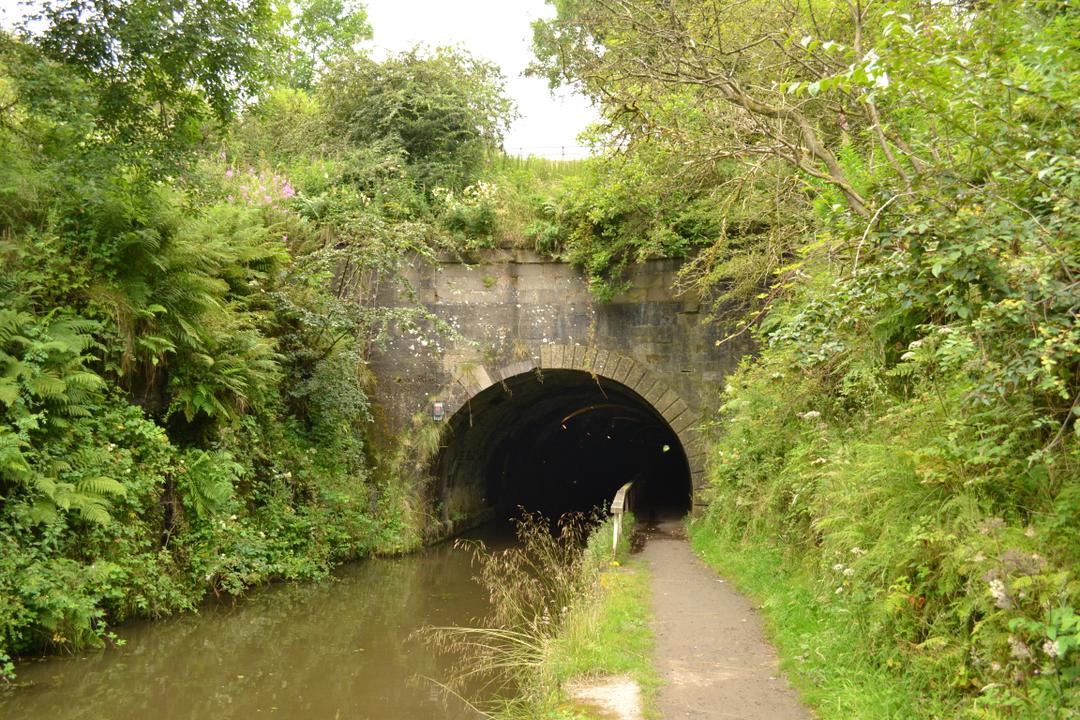

Map derived from data (c) OpenStreetMap
Beyond the aqueduct, the canal retreats into a pleasant wooded cutting, contrasting with the open embankment before it. Beyond the next bridge (49, B825) there is an unusual large square basin on the south side of the canal. This is Causewayend and was once the terminus of an early railway line from Slamannan. Two railway bridges once crossed the canal here as well but only the abutments now remain.

Remains of railway bridge near Causewayend
There are two more of the Millennium-style bridges coming up: no. 51 replaced a restrictive Armco culvert under Vellore Road, and 52A carries a more major road, the A801. As at the M8 bridge, the canal had to be diverted to a higher point on the road to cross underneath, though not as far in this case. In between these two former obstructions is the picturesque Muiravonside Church. The next bridge following the A801 is Bethankie Bridge, an original stone aqueduct over a minor road.
The canal runs next to the railway line across open fields until it reaches Polmont. The station is close to bridge 54 which can be useful for making return journeys by train after a long canalside walk, as the next stations in either direction (Linlithgow and Falkirk High) are also very near the canal. After a not-so-nice section next to a young offenders' institution and an industrial estate, there is a unique item of canal heritage: the Union Canal's only swing bridge. After the canal was closed, the bridge was fixed in its closed position and carried the access road to industrial buildings on the far side. But at some point in the late 80s or early 90s, the road was rerouted across nearby bridge 56 instead, and the swing bridge permanently fixed open so as not to obstruct boats. It can still be seen there now.

The Laughin' Greetin' Bridge (laughin' side)
Past the swing bridge is a nice rural stretch, punctuated by original stone bridges and aqueducts over little streams. This leads to Glen Village on the outskirts of Falkirk where the canal enters a deep wooded cutting with two impressive high arched bridges (60 and 61). The second of these is one of the most famous on the canal due to the carvings above its keystones, and is sometimes known as the "Laughin' Greetin' Bridge". The east-facing keystone bears a carving of a smiling face, while the other side has a horrified face looking ahead at what's to come... what's to come being the Falkirk Tunnel.
The tunnel is nearly half a mile long (696 yards to be precise) and cut through solid rock. It's believed to be the first transport tunnel ever to be built in Scotland, and certainly until recently it was the only canal tunnel. It was built to save the local landowner, Sir William Forbes, from having his view spoiled by the canal. Unlike many earlier canal tunnels in England, the towpath runs right through, and the recent addition of electric lighting has made it an easier walk. The stalactites in the cavernous middle section and the constant dripping of water from the roof, however, have not changed.

Falkirk Tunnel, east portal